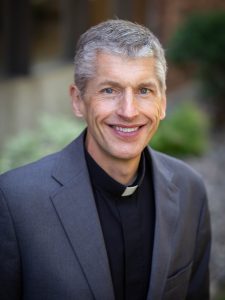 By Pastor Craig Pederson
By Pastor Craig Pederson
In this Advent season of waiting, preparing, and making paths straight, I’ve been thinking about the kind of paths that will be needed for our churches to experience the Christ child this year. With the persistent and varied challenges we’ve faced in recent years, we’ve got some “road work” to do in preparing these paths. We continue to adapt to Covid realities, to come to grips still with historical racial inequities following George Floyd’s murder, and to navigate unusually turbulent economic conditions. (I wanted to write “post-Covid” realities, but having just tested positive myself last week, I’m reminded that it’s still very real and present!)
The Advent journey of making paths straight and getting ready for Jesus used to feel less complicated. The birth of the Savior of the world has always been a cosmic event, of course. But oddly, it felt like there used to be less at stake.
“We would light the Advent wreath candles and dutifully hold off singing our favorite Christmas carols so that the Advent portion of the hymnal could get some exercise.”
We would light the Advent wreath candles and dutifully hold off singing our favorite Christmas carols so that the Advent portion of the hymnal could get some exercise. We would proclaim our stress about busy malls and big box stores, and we would carefully orchestrate holiday parties and family meals to maximize fun and minimize potential discomforts. And, we would remind each other to remember the true “reason for the season” – which, like any good children’s message, has only one real answer: Jesus!
OVER THE DECADES, it has been the province of Mainline Protestants and Catholics to curate this Advent journey. Occasionally the broader culture would come along for the ride. Evangelicals and Pentecostals didn’t resonate so much with it, however, so they went right to the manger.
The term “Mainline Protestant” suggests that some kind of path – a “main line” – has already been prepared, at least for someone. The term likely originated in the early 1900s in the Philadelphia suburbs that were served by the “Pennsylvania Railroad Main Line.” These suburbs were home to primarily white, wealthy, privileged churches. Residents could hop on the Main Line and join a Protestant church (Presbyterians, Episcopalians, Methodists, Lutherans, etc.) that best served their social, economic, and community interests.
The term was popularized in the 1920s when these large Protestant denominations affiliated with the newly formed National Council of Churches as they were theologically wrestling with fundamentalists. For the past hundred years, it has been used as a catch-all phrase to describe the growth in numbers and political influence – and then the decline – of these large national denominations.
“Brueggemann advocates for us to pay greater attention to paths, because a path requires ‘slow, inefficient neighborliness.’”
Mainline churches have long been characterized by social justice values and a progressive theology that strives to be inclusive. But they have struggled to put those values and theology into practice in ways that have transformed the conditions of inequity and oppression, and their evangelism efforts have often fallen short.
In a recent article, Lutheran pastor and consultant Dave Daubert suggests it is precisely this mainline orientation that has impeded our spiritual vitality and evangelism. He says,
“I routinely am part of a conversations about how to share the good news of God in Christ with others and how to invite people into a life of faith. … I often hear the same thing from mainline folks everywhere. We like to serve. We like to pay attention to the world around us. But we don’t like to talk about our faith. Almost always the reason is the same: Whatever brand of church we are part of doesn’t do that. It’s [not] in our DNA.”
In another recent article, Walter Brueggemann reflects on the different types of journeys we experience based on the type of route we take:
“So consider ‘paths.’ They are formed by habit and reiterated walking. Even cows soon trace out a path as they head ‘home’ at milking time after a long day. Such paths take the landscape as it is, and traverse it in unhurried ways. By contrast a ‘road,’ or better ‘a highway,’ brings the necessary bulldozers and earthmovers to alter the landscape to make travel swifter and more convenient.”
Brueggemann says that paths emerge inefficiently, while roads (and rail lines, I would add) are designed with efficiency and speed that serve the economic interests of those in power. He writes, “… it is even better if the road system can be designed to destroy ‘undesirable’ neighborhoods of the poor or ‘people of color’ who are at best an inconvenience for the regime of efficiency and speed, and do not in any case usefully participate in the wondrous market of commodity goods.”
Brueggemann advocates for us to pay greater attention to paths, because a path requires “slow, inefficient neighborliness that allows time for serious face-to-face interaction, and that takes seriously the wellbeing of neighbors whose names we might actually come to know.”
A LOT IS AT stake this Advent season. Even as we tend to the spiritual, mental, and physical health of our churches, we are also growing in our awakening to the needs and gifts of our neighbors outside of our mainline experience.
“The Advent journey of making paths straight and getting ready for Jesus used to feel less complicated.”
For my part, I acknowledge that I am drawing upon the work of two older white male religious leaders with strong critiques of mainline churches for this blog. Part of my Advent “road work” is to reflect on my own mainline experience, and to seek out broader voices to absorb their wisdom, insights, and experiences.
Blessings on the Advent paths you prepare for yourself, your church, and your community. Jesus is coming soon!
